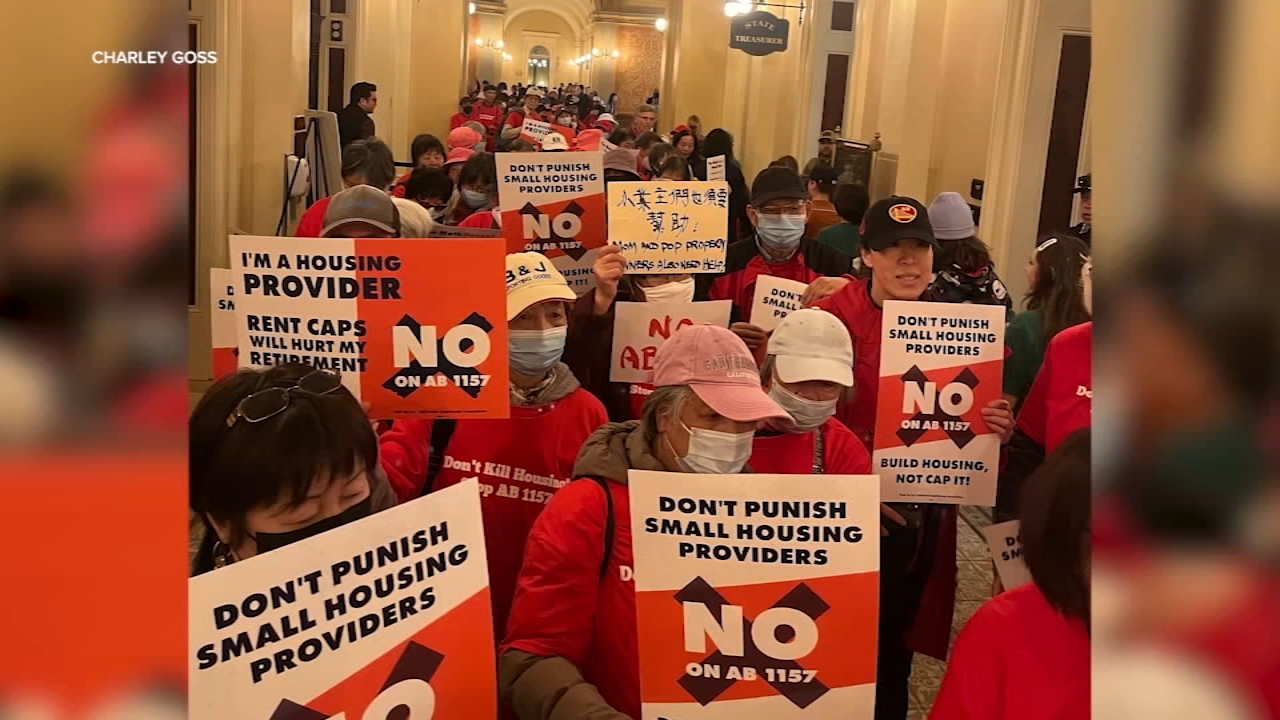These Bay Area counties will experience jump in extreme heat days in coming decades, data shows

SAN FRANCISCO (KGO) -- While climate change affects all of us, new projections are highlighting the increasing stress on workers who do their jobs outdoors - and several Bay Area counties are going to be especially vulnerable in the coming decades.
WEATHERING TOMORROW: See the impact of climate change where you live
The ABC7 data journalism team analyzed data from the First Street Foundation, a nonprofit science and research group that studies climate risk data. It found the average U.S. county will see 13 more days per year with a heat index of 100 degrees Fahrenheit or higher. By 2050, weather data models show some communities will live with up to 131 days a year - more than one-third of the year - that feel like 100 degrees or warmer.
Graph not displaying correctly? Click here to open in a new window.
In the Bay Area, most counties will see a rise in extreme heat days, where the outdoor heat index exceeds 90 degrees. Santa Clara County will experience more than 10 extra days above 90 degrees, jumping from 18 to 29 days. Other county hotspots will spike as well, including Contra Costa County from 27 days to 40 days, Napa County from 29 days to 45 days and Solano County from 37 days to 54 days.
MORE: Look up how climate change is forecast to impact your neighborhood
"Sometimes it does get a little hot out there. You know, you start the day off and it's pretty cold. And around 10 o'clock, it's already high 90s," said Victor Dominguez, a parks maintenance worker for Santa Clara County Parks Department, said.
But he says crews at Hellyer Park and other sites in Santa Clara County have a strategic plan in place before work on hot days even begins. This includes email alerts and tailgate safety meetings that cover everything from ensuring accessible supplies of drinking water to heat relief.
"Maybe we'll take a sooner break or we'll even do the majority of the hard labor tasks and jobs more towards the beginning of the shift," Dominguez said.
While most other Bay Area counties will also experience heat increases, experts say the most vulnerable locations often have the highest percentage of people working outdoors.
Graph not displaying correctly? Click here to open in a new window.
According to the U.S. Bureau of Labor Statistics, 15% of the Napa County worker population spends the majority of their time outdoors. Sonoma County is the next highest at 10%, with Solano and Marin counties following at 7% each. Santa Clara County's outdoor worker population is 6%.
MORE: Four ways to build heat-resilient cities
Santa Clara County's heat preparation for park workers is important because the CDC found "hot weather is associated with an increase in heat-related illnesses, including cardiovascular and respiratory complications, renal failure, electrolyte imbalance, kidney stones, negative impacts on fetal health, and preterm birth."
According to the Agency for Health Care Research and Quality's Healthcare Cost and Utilization Project, in California, there were 16.6 heat-related ER visits per 100,000 people in 2019.
Graph not displaying correctly? Click here to open in a new window.
Dr. Cecilia Sorensen, the director of the Global Consortium on Climate and Health Education at Columbia University, agrees that outdoor workers are more at risk for heat-related issues on the job.
"So outdoor workers, agricultural workers, construction workers, and then we think about areas of the country where there's, you know, widespread environmental injustice issues related to neighborhoods," said Dr. Sorensen.
MORE: Sick of hearing about record heat? Scientists say those numbers paint the story of a warming world
One of those factors is tree canopy, which can lower street temperatures dramatically.
When ABC7 did an aerial survey for a previous report, we spotted stark differences in tree cover between higher and lower-income neighborhoods across the Bay Area.
Graph not displaying correctly? Click here to open in a new window.
Vivek Shandas, professor of climate adaptation at Portland State University, studies the disparity.
"And so what we now know across the country in all the cities we study is that those historically segregated neighborhoods have orders of magnitude less tree canopy than they're invested in and greenline counterparts, and that legacy casts a long shadow. And we're now in the midst of trying to write some of those historical wrongs," said Shandas.
MORE: Polling data shows climate change isn't as divisive as you think
Maintenance director Mike Will says expanding tree canopy is already a priority at Santa Clara County parks. Managers said they planted close to 600 trees last year and have ongoing planting goals over the next several years as well.
"Our goal now is to step up our tree planting process so that 15 years from now we have decent shade trees for the public for when they come to our park, they have a place to get out of the sun," said Will.
If you're on the ABC7 News app, click here to watch live












